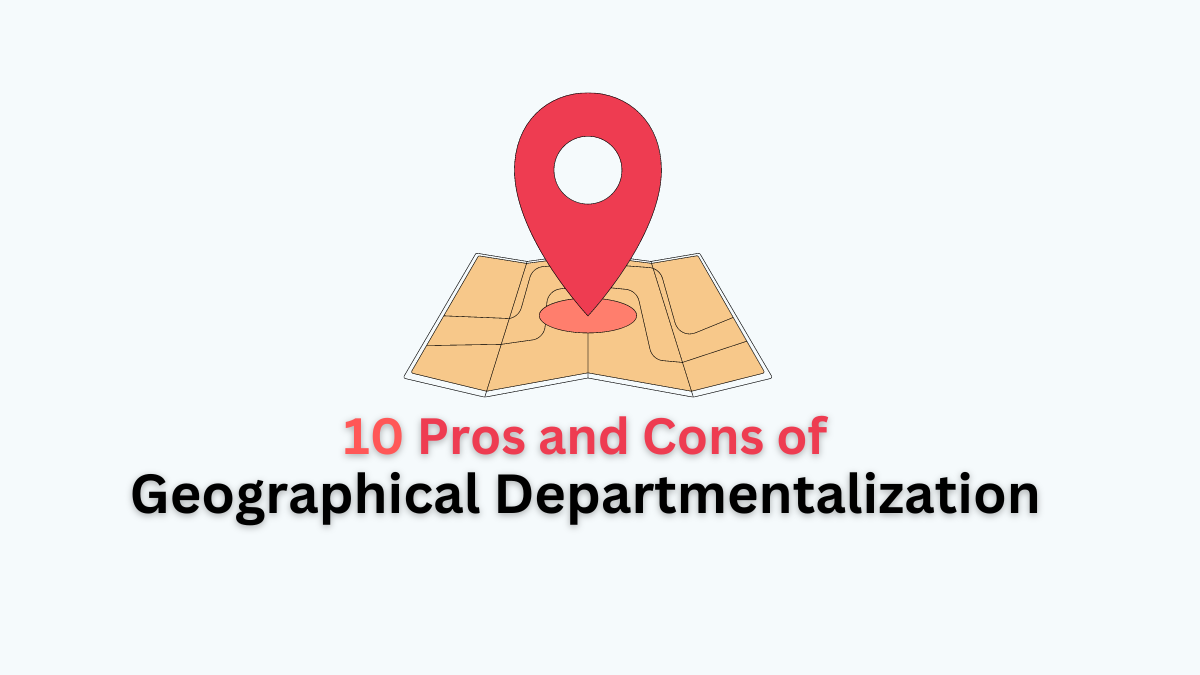Pros and Cons of Geographical Departmentalization
Geographical departmentalization, also called territory departmentalization is an organizational strategy where business operations are structured according to different geographic regions or locations. Each region operates as a distinct department responsible for managing local activities, resources, and strategies tailored to regional market conditions and customer preferences.
Geographical departmentalization offers distinct advantages and disadvantages that organizations must consider when implementing this organizational structure. Here’s an analysis of the main pros and cons of geographical departmentalization:
Pros of Geographical Departmentalization
Let’s explore the five main advantages of geographical departmentalization in the organization:
Better Customer Understanding
By organizing operations based on geographic regions, companies can gain deeper insights into local customer needs, preferences, and behaviors. This localized approach allows businesses to tailor their products, services, and marketing strategies more effectively to meet regional demands.
For example, a multinational corporation can customize its offerings in different countries based on cultural preferences and buying habits.
Localized Decision Making
Geographic departmentalization empowers regional managers to make decisions that are more relevant and timely. Local managers have a better understanding of local market dynamics and can respond quickly to changes or opportunities within their regions. This agility in decision-making enhances operational efficiency and customer responsiveness.
Enhanced Cultural Adaptation
Operating locally enables organizations to adapt their business practices and strategies to fit diverse cultural contexts.
This adaptation is crucial for building strong relationships with local communities, enhancing brand perception, and improving market penetration. Companies can align their marketing messages and product offerings with cultural norms and values, fostering deeper customer engagement.
Efficient Resource Allocation
Each geographic region under departmentalization can optimize its resource allocation based on local demand and operational requirements.
This efficiency minimizes wastage and improves cost-effectiveness by aligning resources more closely with regional needs. For instance, staffing levels, inventory management, and distribution networks can be tailored to each region’s specific requirements.
Read More: 10 Major Pros and Cons of Committee Organization
Improved Regional Performance
Geographical departmentalization facilitates focused management and accountability for regional performance metrics. Regional managers can set goals aligned with local market conditions and monitor key performance indicators closely.
This localized focus enhances productivity, sales performance, and profitability within each region, contributing to overall organizational success.
Cons of Geographical Departmentalization
Now, let’s explore five key disadvantages of geographical departmentalization in the workplace:
Higher Costs Due to Duplication
Maintaining separate departments for each geographic region can lead to increased costs. Duplication of administrative functions, facilities, and resources across regions adds to operational expenses.
For example, each region may require its own infrastructure, staffing, and marketing campaigns, which can strain organizational budgets, especially for smaller companies.
Read More: 10 Pros and Cons of Functional Departmentalization
Limited Communication Across Regions
Communication and coordination between geographically dispersed departments can be challenging. Different time zones, languages, and cultural differences may hinder effective collaboration and information sharing across regions.
This limitation can result in misunderstandings, delays in decision-making, and missed opportunities for synergy and knowledge transfer.
Difficulty in Coordinating Activities
Harmonizing activities and aligning strategies across diverse geographic regions poses significant coordination challenges.
Variations in local regulations, market conditions, and customer expectations may necessitate different approaches in each region, complicating centralized control and strategic alignment. This complexity can undermine organizational cohesion and consistency in operations.
Read More: 10 Major Pros and Cons of Customer Departmentalization
May Create Regional Biases
Geographical departmentalization can inadvertently foster biases towards regional interests and priorities. Regional managers may prioritize local objectives over broader organizational goals, leading to suboptimal decision-making and resource allocation.
This siloed mentality can hinder collaboration and integration efforts, potentially fragmenting the organizational culture and unity.
Less Sharing of Resources
Each geographic department tends to operate autonomously, focusing on local needs and goals. This autonomy may limit the sharing of resources, best practices, and innovations across regions.
As a result, opportunities for economies of scale and cross-regional efficiencies may be missed, leading to inefficiencies and reduced competitiveness in the broader market.
In conclusion, while geographical departmentalization offers benefits such as localized customer focus, enhanced cultural adaptation, and efficient resource management, it also presents challenges related to higher costs, coordination difficulties, and potential regional biases. Organizations considering this approach must carefully weigh these pros and cons to determine if geographical departmentalization aligns with their strategic objectives, operational capabilities, and organizational culture.
